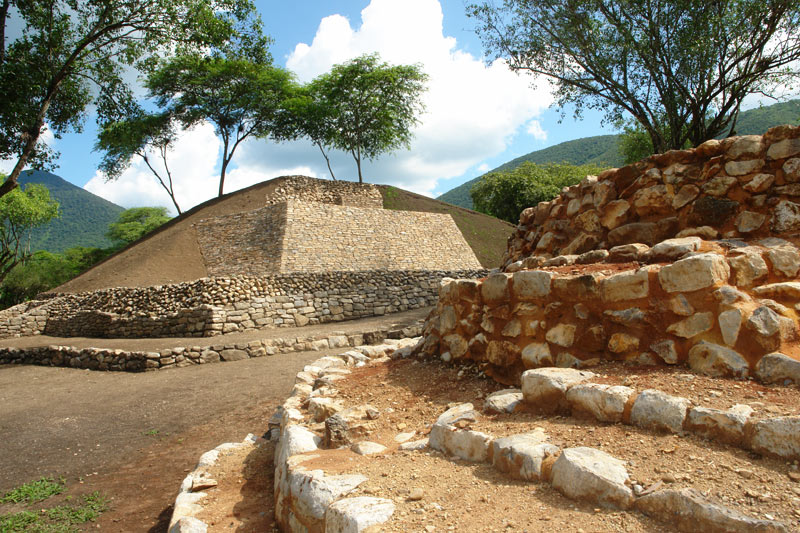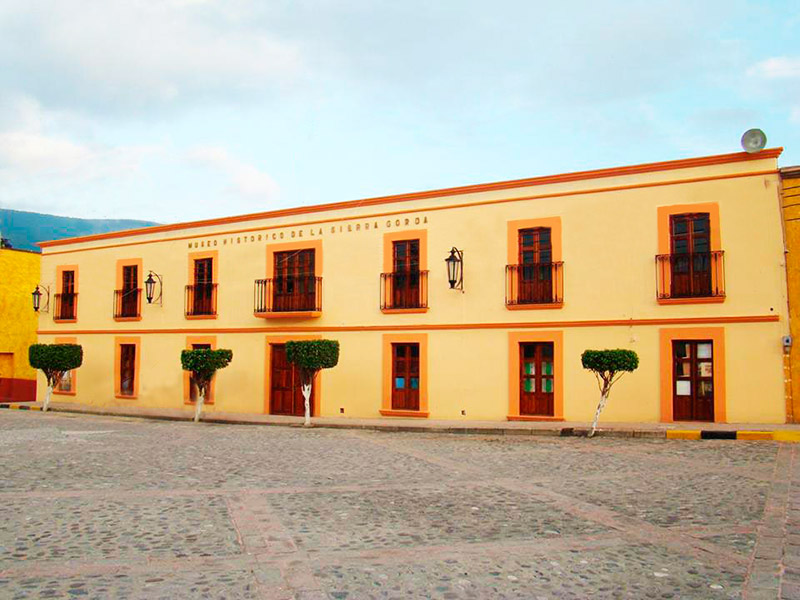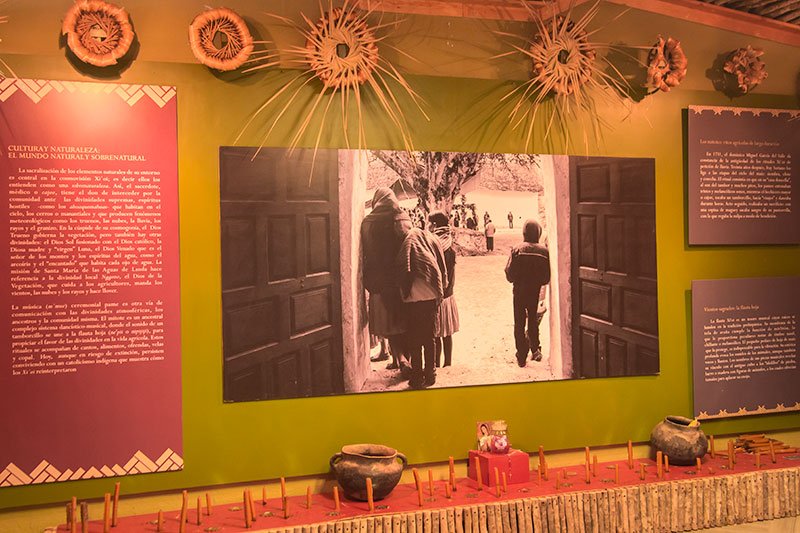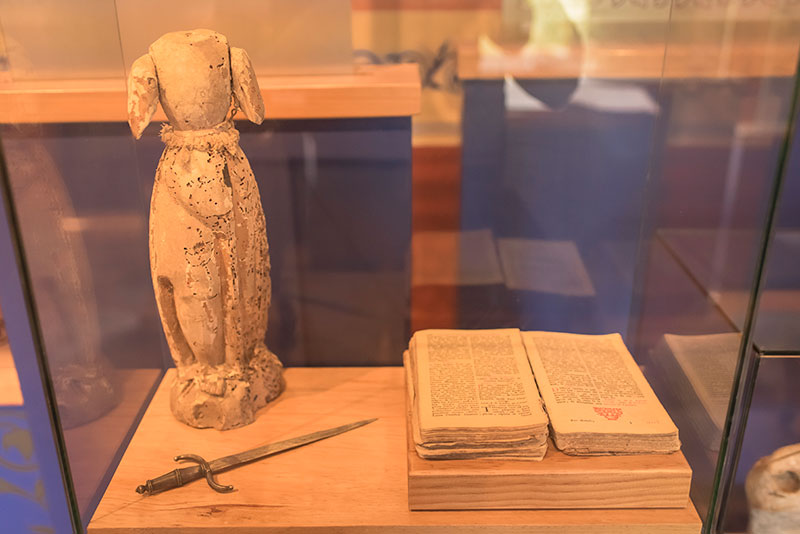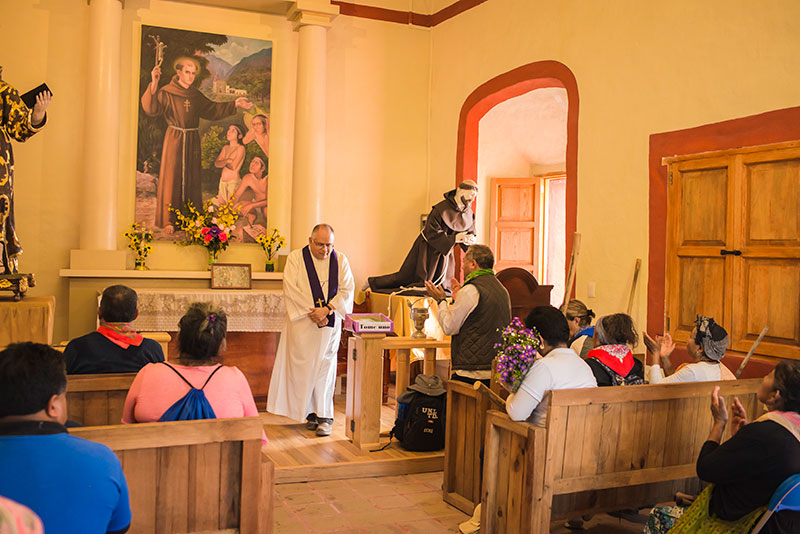
Historic Sites
Archaeological Zone of Tancama
The archaeological zone of Tancama located in the municipality of Jalpan, Querétaro was the place of settlement of the Huasteca culture, its maximum splendor was reached in the years 700 to 900 of our era.
The evidence found in the archaeological works reveal the great development that the Huasteca culture had, as well as its relationship with other cultures of western Mexico.
The area is made up of three sloping squares, thus simulating the shape of the neighboring hill, perhaps in his quest to imitate nature, Tancama was ruled by a ceremonial and astronomical character.
Santiago is the central square and its function was to limit access to the interior of the squares. The Plaza de la Promesa is not yet explored, due to the distribution of the structures it is believed that it has a similar appearance to that of the Plaza El mirador.
Plaza El mirador had a strictly ceremonial use and in it are buildings such as the so-called "copper earrings" and the "manta ray thorn", both names come from objects found on the site. It also has a small ball game.
Historical Museum of the Sierra Gorda
Originally known as the "Fuerte de Jalpan"; It was built in the 16th century by Fray Juan Ramos de Lora, it is one of the oldest buildings in Jalpan, for many years it served as a military fort, later it was the regional prison for more than 50 years. Since 1991 it houses the cultural and historical heritage of the Sierra Gorda.
Through its 7 rooms it is possible to admire the evolution of the Sierra Gorda during the different stages of national history, all supported by the remains found in the region, as well as images and documents that have served to forge the identity of the Sierra Gorda Queretana.
Pame Xi Oi, Tancoyol Museum
One of the most emblematic venues in this sense is the recently restored Pame XI'OI Community Museum, located within the Tancoyol Delegation. In this Pame Community Museum, the culture and roots of the municipality of Jalpan de Serra are reflected, as well as the traditions and particularities of the tradition of this culturally defined group.
With a meticulous selection of characteristics of the region, such as the Pame culture, the showroom recreates an atmosphere of tradition, framed by decoration of sotol, wood, traditional offerings and museography that shows typical and distinctive elements of the Pame culture, in order that the inhabitants and visitors know the history, origins and ways of life that give them communal identity as a people.
Museum of Our Lady of the Sea of Herrera, Saucillo
In this historical synthesis of the community museum, a digitized replica of the Virgin of Our Lady of the Sea of Herrera is presented, that Virgin of which Escandón was devoted to. He was born in 1700 in Soto la Marina in the Santander region in Spain, and as a boy was taken to see the hermitage and the Virgen of the Sea, which was 6 kilometers away and when it occurred to him to found the first Spanish town, he imposed the name of the Sea of Herrera on this virgin.
Cultural Center
It is located in the center of town, in front of the Main Garden and next to the Historical Museum; In this building the school, Melchor Ocampo, was installed, the first in the municipality, later it was occupied by the USEBEQ offices and now present day they house the municipal government offices such as; the Tourism Managemente, House of Crafts, the Library and cultural workshops of art and music, soon the Museum of Popular Arts of Jalpan and the Sierra Gorda will be integrated, where you can appreciate the different oldest crafts of Jalpan and the municipalities that make up the Sierra Gorda Biosphere Reserve.
Chapel of San Junípero
This construction, which is located on the side of the Temple, is part of the buildings that make up the Mission of Santiago Apóstol; During the reform war, this space was the prison of General Mariano Escobedo, it is not known how long he was in it, only that he managed to get out thanks to a safe-conduct that General Tomás Mejía gave him, who later was shot in the Cerro de las Campanas in the City of Querétaro. Previously this building housed the Post Office and is currently the Chapel of San Junípero Serra.



